Access IBEC scientific production portal (IBEC CRIS), for more detailed information and advanced search features.
Find here the list of all IBEC's publications by year.
by Keyword: concavity
![]() del-Mazo-Barbara, Laura, Diez-Escudero, Anna, Lodoso-Torrecilla, Irene, Aramesh, Morteza, Persson, Cecilia, Ginebra, Maria-Pau, (2024). Direct ink writing of biomimetic hydroxyapatite scaffolds with tailored concave porosity International Journal Of Bioprinting 10, 224-244
del-Mazo-Barbara, Laura, Diez-Escudero, Anna, Lodoso-Torrecilla, Irene, Aramesh, Morteza, Persson, Cecilia, Ginebra, Maria-Pau, (2024). Direct ink writing of biomimetic hydroxyapatite scaffolds with tailored concave porosity International Journal Of Bioprinting 10, 224-244 ![]()
Direct ink writing (DIW) is a promising technology for the fabrication of personalized bone grafts, as it enables the customization of their geometrical conformation with high reproducibility and is compatible with the use of self-setting calcium-deficient hydroxyapatite inks. However, the scaffolds obtained by DIW consist mostly of convex filaments, which is a limitation since concave surfaces are known to promote bone regeneration in vivo. In this work, we explore the use of triply periodic minimal surface (TPMS) designs in DIW of calcium phosphate self-hardening inks as a strategy to obtain scaffolds with controlled concave macropores. The limitations of the printing parameters with high ceramic-loaded inks using DIW resulted in only 20% nominal porosity for gyroid-, diamond-, and Schwarz-based structures. The inherent layered pores from TPMS geometries enabled concavities typically unattainable via DIW, bearing substantial implications for subsequent osteoinductive capabilities. Although the mechanical properties were lower in the TPMS-based scaffolds than in the orthogonal patterned ones, the blood permeability of TPMS-based structures was higher. The concave pore architecture enhanced the osteogenic potential of the and mineralization.
JTD Keywords: Alkaline-phosphatase, Biomimetic hydroxyapatite, Biomorphic structures, Blood analog fluid, Bone, Bone scaffold, Concavity, Defects, Direct ink writing, Mineralization, Minimal-surfaces, Permeability, Pore architectur, Shap, Stress, Tissue
![]() Konka, J, Buxadera-Palomero, J, Espanol, M, Ginebra, MP, (2021). 3D printing of hierarchical porous biomimetic hydroxyapatite scaffolds: Adding concavities to the convex filaments Acta Biomaterialia 134, 744-759
Konka, J, Buxadera-Palomero, J, Espanol, M, Ginebra, MP, (2021). 3D printing of hierarchical porous biomimetic hydroxyapatite scaffolds: Adding concavities to the convex filaments Acta Biomaterialia 134, 744-759 ![]()
Porosity plays a key role on the osteogenic performance of bone scaffolds. Direct Ink Writing (DIW) allows the design of customized synthetic bone grafts with patient-specific architecture and controlled macroporosity. Being an extrusion-based technique, the scaffolds obtained are formed by arrays of cylindrical filaments, and therefore have convex surfaces. This may represent a serious limitation, as the role of surface curvature and more specifically the stimulating role of concave surfaces in osteoinduction and bone growth has been recently highlighted. Hence the need to design strategies that allow the introduction of concave pores in DIW scaffolds. In the current study, we propose to add gelatin microspheres as a sacrificial material in a self-setting calcium phosphate ink. Neither the phase transformation responsible for the hardening of the scaffold nor the formation of characteristic network of needle-like hydroxyapatite crystals was affected by the addition of gelatin microspheres. The partial dissolution of the gelatin resulted in the creation of spherical pores throughout the filaments and exposed on the surface, increasing filament porosity from 0.2 % to 67.9 %. Moreover, the presence of retained gelatin proved to have a significant effect on the mechanical properties, reducing the strength but simultaneously giving the scaffolds an elastic behavior, despite the high content of ceramic as a continuous phase. Notwithstanding the inherent difficulty of in vitro cultures with this highly reactive material an enhancement of MG-63 cell proliferation, as well as better spreading of hMSCs was recorded on the developed scaffolds. Statement of significance: Recent studies have stressed the role that concave surfaces play in tissue regeneration and, more specifically, in osteoinduction and osteogenesis. Direct ink writing enables the production of patient-specific bone grafts with controlled architecture. However, besides many advantages, it has the serious limitation that the surfaces obtained are convex. In this article, for the first time we develop a strategy to introduce concave pores in the printed filaments of biomimetic hydroxyapatite by incorporation and partial dissolution of gelatin microspheres. The retention of part of the gelatin results in a more elastic behavior compared to the brittleness of hydroxyapatite scaffolds, while the needle-shaped nanostructure of biomimetic hydroxyapatite is maintained and gelatin-coated concave pores on the surface of the filaments enhance cell spreading. © 2021 The Authors
JTD Keywords: 3d printing, bioceramics, biomimetic, bone, bone regeneration, concavity, concavity, bone regeneration, gelatin, hydrogel, hydroxyapatite, microspheres, osteoinduction, porosity, porous filament, substitutes, tissue-growth, 3d printing, Biomimetic, Biomimetics, Calcium-phosphate scaffolds, Concavity, bone regeneration, Durapatite, Gelatin, Humans, Hydroxyapatite, Porosity, Porous filament, Printing, three-dimensional, Tissue engineering, Tissue scaffolds

